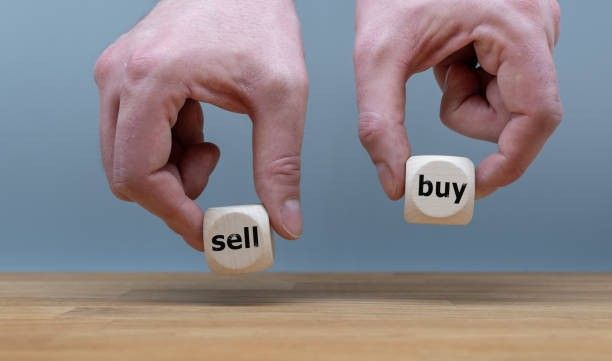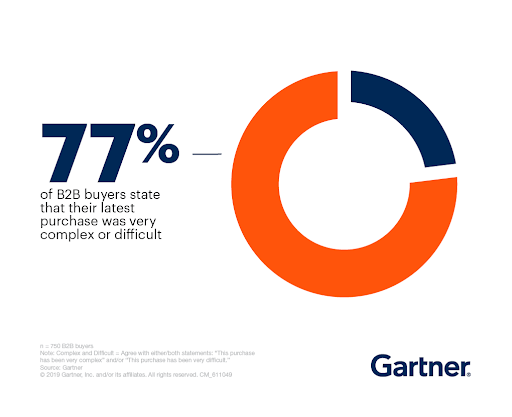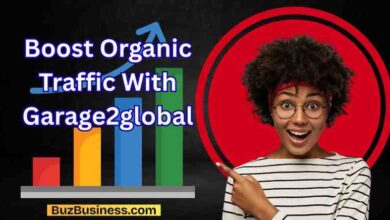
Many sales leaders struggle to understand the difference between sales enablement vs buyer enablement, and understandably so. While these terms sound similar, they focus on different stakeholders in the sale process.
If you want to boost your organization’s sales, you must provide your sales team with training, tools, and resources to close more sales. This is what is referred to as “sales enablement.”
On the other hand, buyer enablement solely focuses on empowering potential customers with the information and tools they need to make the right purchase decision. This includes giving them visual presentations, demos, and other resources that help them understand why your product is superior to competitors. It is also a focus on creating a better buying experience that allows your buyers to speak clearly to the problem that you are solving and suggesting the best solution to solve it.
Therefore, sales and buyer enablement are two distinct tools that take different approaches to help you convert sales faster. They work differently but are equally important.
Keep reading below to learn about buyer and sales enablement roles in the sale process and how to implement them in your organization.
- Learn more about our buyer enablement process here.
Key Takeaways
- Sales enablement means empowering your salespeople to sound more convincing to prospects.
- Buyer enablement involves making your potential customers’ buyer journeys less complicated to help them convert faster.
- Sales enablement and buyer enablement are equally important – balancing them is vital to improved sales success.
Buyer Enablement Explained
Have you ever tried to buy something online, but there was so much information in the description that it was difficult to understand what it is or how it works? If yes, you’re not alone. A study by Gartner found that 77% of B2B customers found their purchase process difficult.

Buyer enablement aims to make this process easier by providing the prospect with relevant information to help them understand the product and speed up their decision-making.
According to the Gartner study, once a potential customer understands the product, they’re also less likely to revisit their purchase decision, which happens with 95% of B2B customers.
Buyer enablement involves feeding the customer with the right information to help them make an informed and decisive purchase decision.
Sales Enablement Explained
While buyer enablement focuses on the customer, sales enablement aims to empower your sales team. Because buyer journeys are not linear, your sales reps need the tools, training, and resources to monitor changes in these journeys and customize sales material accordingly.
Sales trends are constantly evolving. Therefore, sales enablement includes ensuring your salesforce is conversant with new industry practices and technologies to stay competitive.
For example, artificial intelligence is one of the latest trends in sales. You should ensure your sales team has essential AI-powered sales enablement tools like chatbots, sales and conversion tools, and CRM systems.
Sales enablement is supposed to help your sales department improve sales efficiency and convert sales faster.
Key Differences Between Sales vs Buyer Enablement
As we’ve seen above, sales and buyer enablement are similar processes aimed at different audiences. Let’s look at some of the main differences between sales vs buyer enablement:
The Messaging is Different
Buyer enablement has an informative and educative tone. You’re trying to give your prospective customers as much relevant information as possible to help them understand what you’re offering.
For example, you can show a product demo, showing them how the product works and which problems it solves. You can also compare the product with competitors to showcase what yours does better and how it does it.
On the other hand, sales enablement has sales-centered content like brochures and custom scripts to overcome objections.
Target Audience
Sales enablement is aimed at sales representatives. It improves their sales methodologies, tools, and technologies to make your salespeople more convincing to potential customers.
Buyer enablement focuses on your customers. It’s supposed to make their buyer journeys less frustrating and ensure they understand everything they need to know about the product before making a purchase decision.
Technological Adoption
Both sales and buyer enablement adopt technology to improve the sales process. However, they do it differently.
Sales enablement includes using AI sales tools, such as intelligent solutions, to identify new leads and channel them into the sales funnel, increasing sales efficiency.
In contrast, buyer enablement uses informative tools, like VR showrooms, to give customers a better look and feel of the products.
- Book your free demo today to see how you can close more deals faster.
Sales Enablement vs Buyer Enablement Pros and Cons
Buyer enablement and sales enablement are equally important for any business and can yield sales improvements if implemented correctly. However, they also have their downsides. Let’s take a look at their benefits and disadvantages.
Sales Enablement
Pros
- Cohesion between sales and marketing tools: Sales enablement improves the collaboration between the sales and marketing teams as they brainstorm and implement effective sales strategies.
- Better sales performance: Sales enablement focuses on improving sales efficiency. Therefore, if implemented correctly, your sales should improve significantly.
Cons
- Requires ongoing training: Sales enablement is an evolving process that requires constant refresher training to keep up with new industry trends.
- Expensive to implement: The best sales enablement tools can have high initial costs or ongoing subscriptions, making implementing effective sales enablement costly.
Buyer Enablement
Pros
- Shorter buyer journeys: Buyer enablement helps potential customers make purchase decisions faster, reducing the friction of a traditional buyer journey.
- Increased buyer engagement: Buyer engagement tools like chatbots encourage customers to engage with the sales team as they enquire more about the product.
- Improved transparency: Buyer enablement aims to give customers all the information they require, including details that might negatively influence their purchase decision. Customers appreciate this transparency and are more likely to trust your brand.
Cons
- Requires constant updates: Effective buyer enablement involves monitoring customer feedback and updating the content to improve it further.
- Loss of sales narrative control: Buyer enablement requires informative and educational content. Therefore, you relinquish control of how you present the product and only give facts, letting the customer form their understanding.
Measuring the Success of Sales & Buyer Enablement
Unsurprisingly, sales enablement and buyer enablement have different success metrics. You can measure the success of your sales enablement strategy with metrics like reduced sales cycles, higher win rates, and better quota attainment.
On the other hand, you can measure the success of your buyer enablement strategy through your customer engagement rates, website traffic, and customer satisfaction levels.
Frequently Asked Questions:
Q1. What is buyer enablement?
Buyer enablement is the strategic effort to empower the prospective buyer with information, such as customized tools, guides, calculators and decision frameworks. It enables buyers to quickly and easily work through complex buying journeys, while building internal consensus and making confident purchase decisions.
Q2. What are the three pillars of sales enablement?
Content, training and technology – the three components of sales enablement. Content arm sales with buyer-relevant content, training hones skills and boosts confidence, technology simplifies processes to work smarter and faster, helping reps to sell better throughout the whole sales cycle.
Q3. What is the difference between buyer enablement and sales enablement?
Buyer enablement arms buyers with the tools they need to make a purchasing decision, such as guides, calculators, and demos. Sales enablement, on the other hand, provides sales teams with the training, content, and tools they need to more effectively and efficiently engage with prospects and close deals.
Q4. Should sales and buyer enablement co-exist?
Yes. They each have a role in the sales process. Sales enablement helps your sales team sound more convincing to customers, while buyer enablement helps buyers make purchase decisions faster.
Q5. What resources are typically offered in buyer enablement?
Buyer enablement resources typically include educational content like white papers, case studies, product demos, self-service portals, and interactive tools that help buyers research, understand, and evaluate a product or service.
Q6. What is another name for sales enablement?
Sales-readiness is another popular way to say sales enablement. This word really focuses on the training and enabling part of readying the sales team for success.
Q7. What are the three pillars of sales enablement?
The three levers of sales enablement are training, tools, and content. Tools streamline repetitive tasks, organize critical data, and generate helpful analytics.
Your sales team gets the software with a little free training and away you go! Content, conversely, powers successful sales interactions.
Q8. What are the core components of sales enablement?
- Strategic Sales Content: Providing targeted sales collateral, presentations, and resources tailored to different customer segments and buying journeys.
- Effective Sales Training: Equipping salespeople with the knowledge, skills, and methodologies to navigate the sales process and address customer needs.
- Coaching and Ongoing Support: Empowering salespeople through one-on-one coaching, feedback sessions, and access to sales managers for guidance.
- Sales Technology Tools: Utilizing CRM systems, sales automation tools, and content management platforms to streamline processes and improve efficiency.



